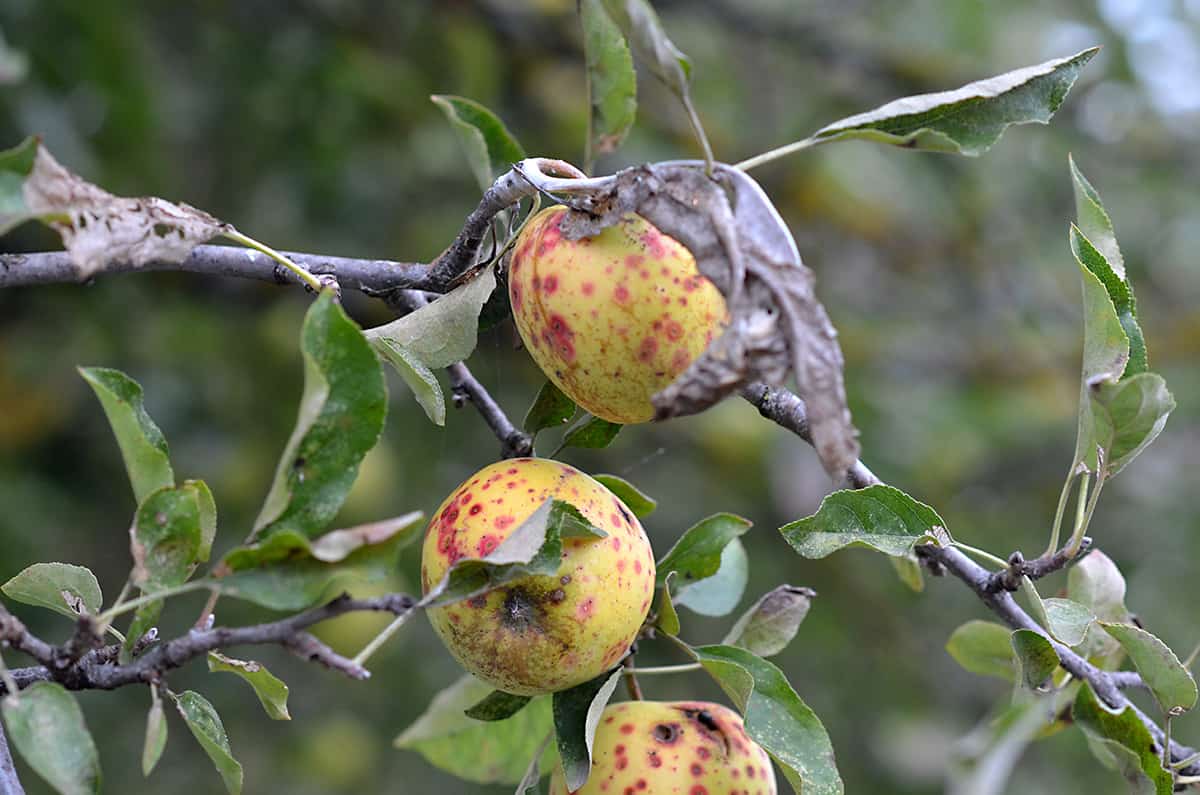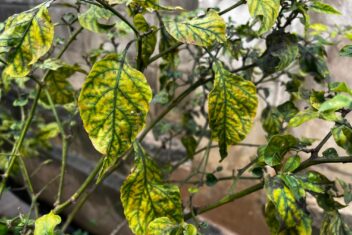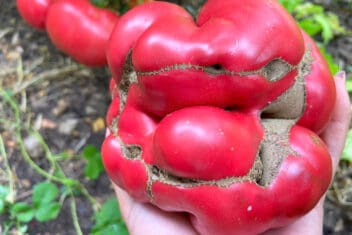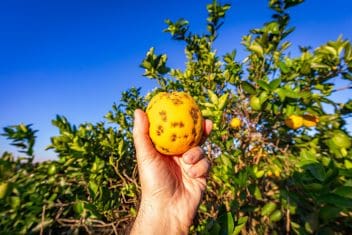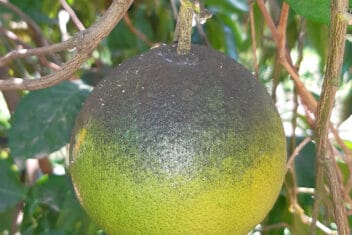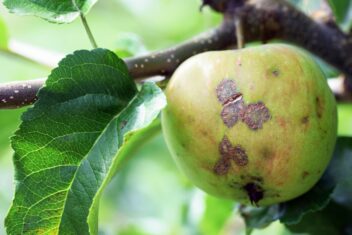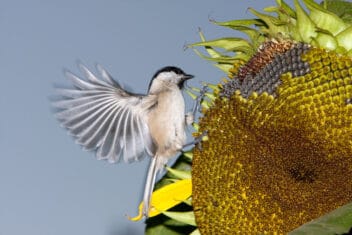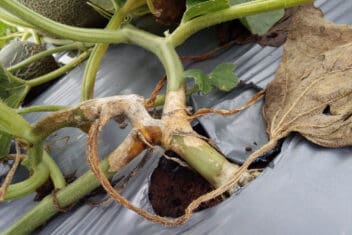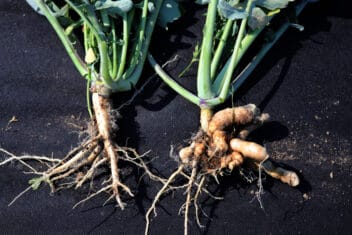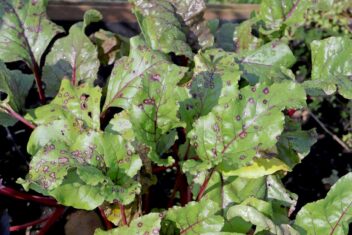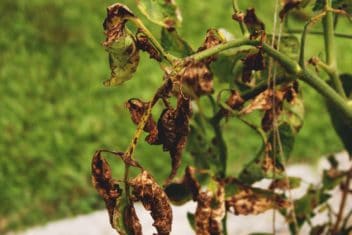Adding fruit trees to your property is a great way to grow more food and add beauty. Before you dive into this world, make sure you know the common fruit tree pests and diseases that you might encounter.
While some pests infect both vegetable plants and fruit trees, some pests and diseases are specific to these trees. Preventative methods are essential when it comes to pests and diseases; it’s always easier to prevent problems than to treat them when they infect your plants.
Don’t worry! If you know what might harm your tree, you can be prepared to face these common fruit tree problems.
Common Fruit Tree Pests
Dealing with these common fruit tree problems is frustrating, but most have effective treatment methods. Always practice good fruit tree practices like pruning and cleaning up debris to keep bacteria and fungal infections away. If your tree ends up infected, make sure you correctly identify the problem to find the right treatment.
Let’s look at some of the most common fruit tree pests. This list is far from exhaustive, but these are some of the most destructive and common insects you might find on your trees.
Apple Maggots

As the name suggests, apple maggots infected apple trees, typically appearing in early July until September. The adult apple maggots live in the soil until July, emerging and laying eggs under the skin of the apples. The larvae feed on the fruits, causing pitted and misshapen fruits.
Prevention methods work well to keep apple maggots out of your garden. Pick up any apples that fall during the growing season and consider hanging sticky traps around your trees to catch the adult females before they lay eggs on the fruits.
If you end up with an infestation of apple maggots, pesticides are effective against these pests, especially ones containing spinosad. You’ll need to spray the trees several times to eliminate them, typically three or four times per season.
Peachtree Borer
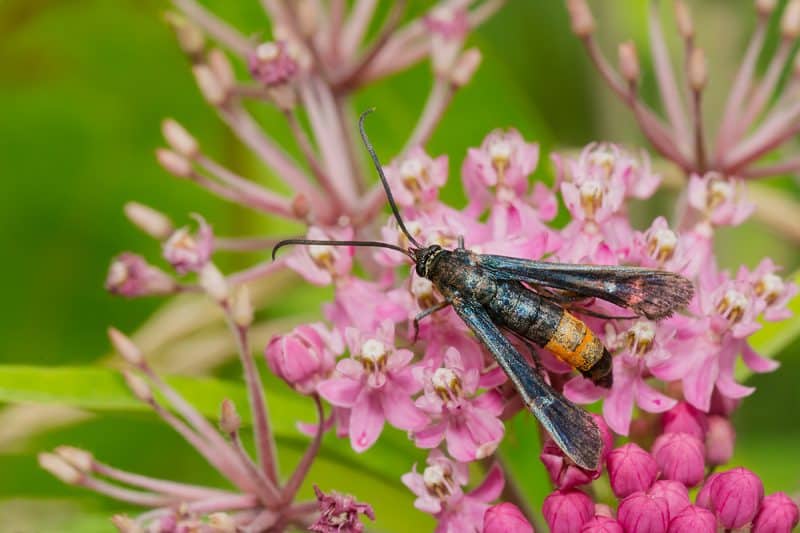
Without a doubt, the peachtree borers are the most destructive pests of peach, cherry, plum, and other stone fruits. The most damage is caused by the immature larvae that chew under the bark of the lower trunk and larger roots. These pests cause extensive wounds, weakening and killing trees.
If you have an infestation of peachtree borers, taking quick action is essential. Insecticides are effective and need to be applied to the lower trunk to stop new eggs from hatching and causing infestations. The spray should target the eggs and larval stages; once larvae migrate into the tree, the sprays aren’t effective.
Psyllids
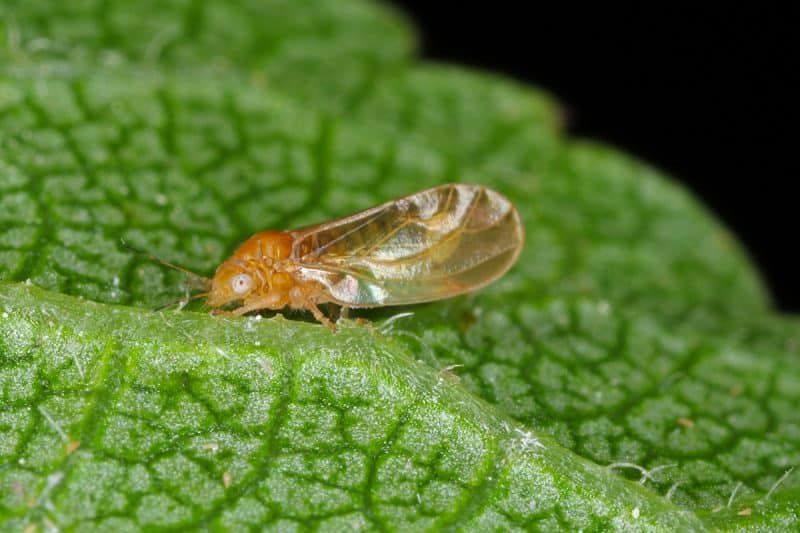
Psyllids are sometimes called plant lice, and these are small, sap-sucking insects that love to feed on fruit trees and closely related family members. There are over 100 species of psyllids, but they all penetrate plant tissues, sucking out the nutrient-dense liquid. Then, they spread honeydew, a sweet substance, over the tree that attracts ants.
Psyllids are one of the top fruit tree problems when the infestation grows to enormous sizes. Broad-spectrum insecticides work and let beneficial insects continue to live in your garden. Neem oil and insecticidal soaps are also effective in killing most psyllids. Pruning doesn’t work because these pests are mobile and just move from branch to branch.
Scale Insects

Scale insects are among the most serious fruit tree problems that infect peach, nectarine, apple, pear, cherry, and plum trees. These insects feed on the plant’s bark, leaves, and fruit and cause stunted growth and fruit lesions. Serious infestations lead to the death of branches or entire trees if left untreated.
Spraying fruit trees with horticultural oils is an effective choice because it smothers the scales along with other soft-bodied insects. Horticultural oils are safe for organic gardens and won’t harm beneficial insects.
Sawfly Larvae
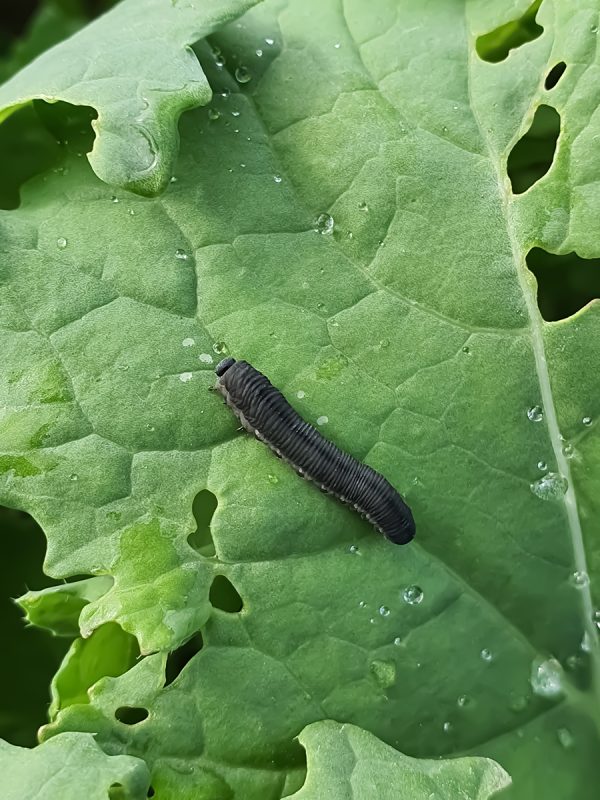
The larvae of sawflies are often called cherry or pear slugs, and they’re a common fruit tree problem throughout the United States and Canada. They infect mountain ash, hawthorn, cherry, plum, and pear trees. Small populations are typically not an issue, but large infestations defoliate entire fruit trees.
The adult sawflies deposit eggs into the leaves, and when they emerge, they start to eat the foliage. Most gardeners wash off the sawflies with insecticidal soap or apply food-grade diatomaceous earth to the leaves.
If you end up having a large infestation, an insecticidal spray that includes spinosad will be an effective choice. Botanical insecticides should be a last resort method because they have harmful side effects.
Winter Moth Caterpillar

The winter moth caterpillar is a frustrating pest that attacks a range of fruit trees like cherry, apple, and crabapple trees.
Unlike other pests, the problems appear quickly in the spring. That’s because the adult moths mate in the late fall and winter, laying eggs in the tree bark crevices. The eggs hatch in the spring, and the larvae quickly start to defoliate entire fruit trees.
The best way to treat winter moth caterpillars is by spraying Bt (Bacillus thuringiensis) on your trees. Bt is a naturally occurring bacteria that causes pests to stop feeding and die. Use this as early as possible in the spring to stop these pests before your trees are a goner.
Common Fruit Tree Diseases
Fruit tree diseases are frustrating. Many are soil-borne diseases that you might not know exist in your soil until your trees are dying. Here are some of the most common fruit tree diseases.
Bacterial Canker
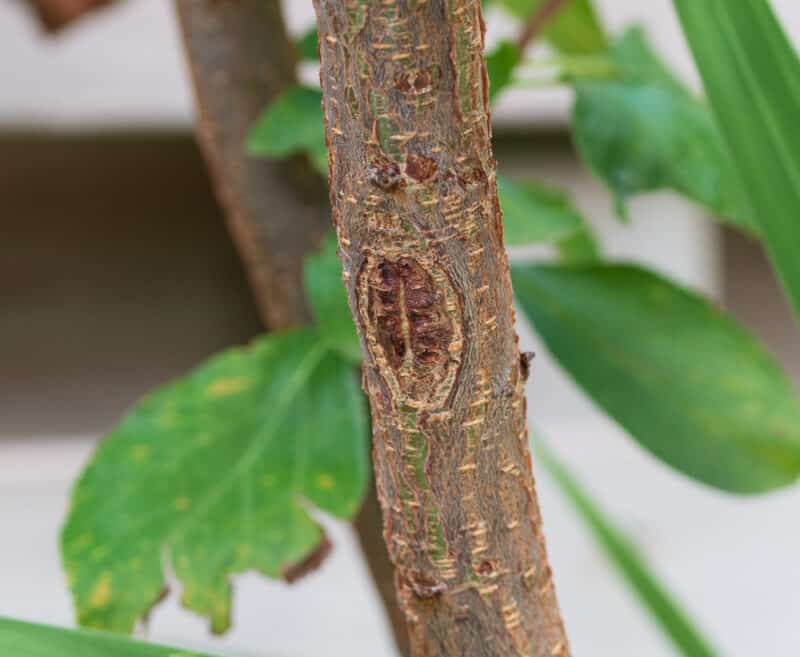
Bacterial canker is a disease that takes over any fruit tree that you might grow on your property. The most common symptom is holes that appear in the leaves and on the new shoots. Eventually, bacterial canker causes entire branches to become infected, eventually dying off entirely.
This fruit tree disease is most commonly found in stone fruit trees and trees that have previous frost damage. If you think this is infecting your trees, prune off the affected branches several inches below the infected area. Apply a fungicide to your tree every two weeks to help eradicate the disease.
Take a look at our guide to bacterial canker for more info.
Brown Rot

Brown rot is a fruit tree disease that affects many different trees, such as peaches, nectarines, plums, cherries, apples, apricots, and pears. It causes the stems, flowers, and fruit to become covered in a brown fungus that mummifies the fruit. Once you know what brown rot looks like, it’s easy to spot.
Remove any affected parts of the tree and fruit to try to slow the fungal spread. Prune the fruit trees to allow for more sunlight and air circulation to prevent fungus from taking over the tree.
Cherry Leaf Spot
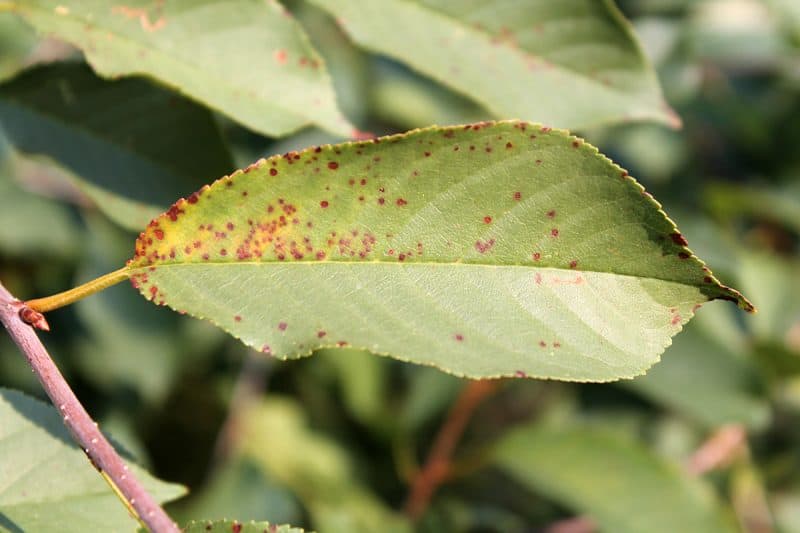
Cherry leaf spot is a fungal disease that affects all types of cherry trees, but it prefers tart cherries the most. It starts with purple spots on the leaves that seem innocent at first, but it quickly progresses until all of the leaves die, leading to complete defoliation of the tree.
This disease lives on the leaves throughout the winter, so it’s crucial that you clean up any debris from the tree that falls off. You also can use fungicidal sprays to keep the disease in check.
Crown Gall
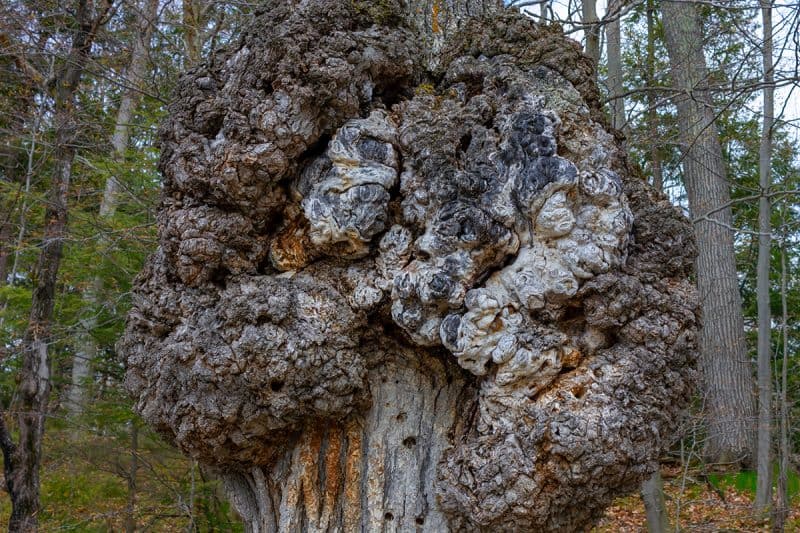
Crown galls are caused by soil-borne bacteria, and it’s most common on apple, cherry, peach, and plum trees.
The problem starts when your tree has a wound of some type, and the bacteria finds its way into the wound. Galls start small and grow massive over time.
Prevention is key for crown gall because it’s tough to get this bacteria out of the soil. Chances are, you’ll have no idea the bacteria is in the soil until it shows up on your tree. Sterilizing tools before working on your fruit trees helps to stop the spread because, once a tree has crown gall, the bacteria live throughout the entire tree.
Fire Blight
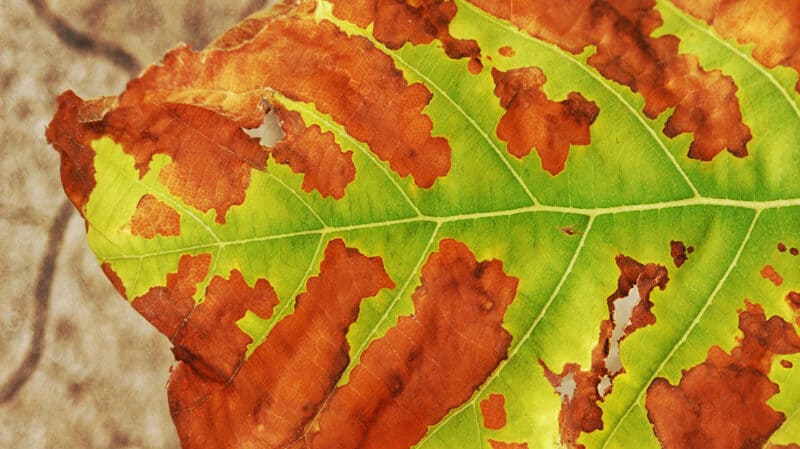
Fire blight is a bacterial disease that attacks apple, crabapple, and pear trees. It’s most common in the Mid-Atlantic region, but it occurs in other regions as well.
This disease received its name because it makes the leaves look like they’ve been burned. They turn yellow or orange and gradually turn brown or black while being dried and wilted.
It’s possible to treat fire blight, but it’s easiest to treat when the disease hasn’t spread too far. The best treatment options are copper, and antibiotic sprays meant for fruit trees, but prevention is key. Plant disease-resistant varieties and avoid applying too much nitrogen when fertilizing your fruit trees.
Peach Scab
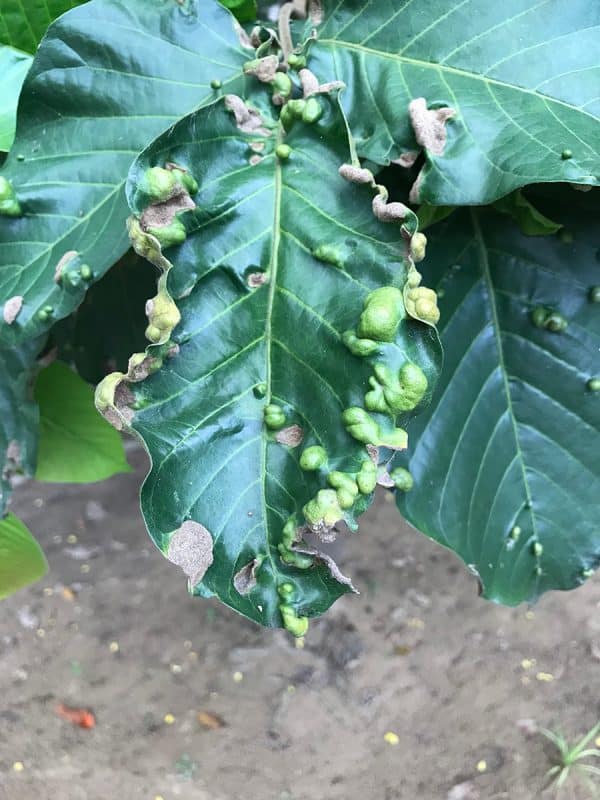
Despite the name, peach scab infects more than just peach trees; it’s also common on nectarine and apricot trees. Peach scab is a fungal disease that affects the twigs, leaves, and fruits on the tree.
Prevention is the best method for peach scab. Ensure you properly prune your trees to increase airflow among the branches, reducing the chances of a fungal infection. Fungus loves warm, humid areas without airflow, so you need to make the environment inhospitable.
If you end up with peach scab, the best course of action is to try spraying a fungicidal spray. These sprays need to be applied from the time petals fall until a month before the harvest. Spray the trees every 10-14 days to be most effective.
